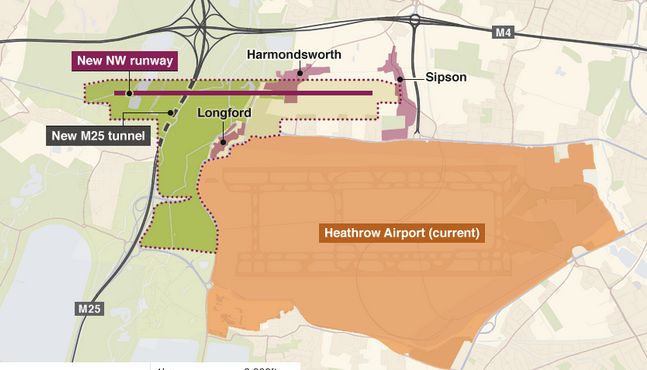Another stage on the long-running saga of expanding the capacity of London’s Heathrow Airport is marked by publication of a report from the House of Commons Transport Committee. This considers the Government’s Airports National Policy Statement, which endorses the proposal for a third runway at Heathrow. The Committee goes along with this, subject to quite a number of caveats about environmental impacts and costs.
What struck me were the weakness of the case for a third runway (the Northwest Runway, NWR), as revealed by the Committee’s findings:
Figure 3 on p17 shows that the main impact of the runway would be to increase the numbers of leisure travellers and international transfer passenger. The extra numbers of business travelers are very small, yet the case for the runway is mainly based on the needs of the UK economy.
‘The benefits and costs the NWR scheme are finely balanced. Even small changes in assumptions or methodology could mean that the monetised costs of expansion via a NWR would outweigh the benefits.’ (p19)
While Heathrow is ‘full’ in respect of aircraft movements and landing/takeoff slots, it is not yet full in terms of passenger throughput since each plane is on average only 76% full and is not always an aircraft with the highest capacity (p40). Luton and Stansted have the equivalent of around one third of a runway to spare through to 2050. This means that passenger throughput for the London airports is forecast to rise by 27% out to 2050 without expansion at Heathrow (p42)
The forecasts show that an expanded Heathrow would accommodate more than three times more outbound passengers than inbound passengers (p48), a net economic deficit to the UK.
The NWR scheme would only offer only one new destination to emerging and fast-growing economies when compared with no expansion by 2050 (p49).
Airport charges at Heathrow are the highest in the world (p82). Could a further runway be financed without increasing charges, which would erode the economic benefits and deter use?
Assessment
I am struck by the weaknesses in the case for building another runway at Heathrow. A key question for the future will be the ability of the airport to finance construction from private sector investors at a cost – both construction and financing – which the airlines and their passengers will be willing to pay via landing charges. The proposal may achieve planning consent but could prove to be commercially unviable.
Professor Anne Graham and I submitted evidence to the Transport Committee, which argued that the market for air may be more mature than generally supposed, and hence demand growth may be less than projected, with consequences for the business case.

